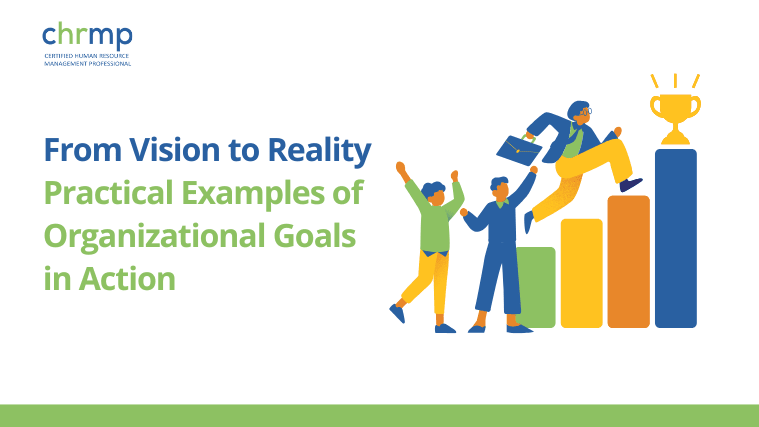

Work is a key aspect of our lives, and most of us spend a substantial amount of time in the workplace. But sometimes, doing the same thing every day for prolonged periods can make work mundane, leading to a lack of motivation.
Here’s where job enrichment comes into play.
Job enrichment is a popular management strategy used for improving the quality of work to make it more meaningful, fulfilling, and engaging for employees by providing them with greater levels of autonomy and responsibility and opportunities for development, growth and career advancement.
Enriching jobs involves redesigning the tasks assigned to employees and changing them to include more meaningful and challenging tasks that provide them with greater mastery, achievement and personal growth.
Several methods are used for enriching jobs, but the central idea behind each method is to create a highly engaging and motivating work environment for employees that empowers them and ultimately contributes to organizational growth.
This blog will discuss the definition, importance, benefits, and common methods used for enriching jobs. We shall also discuss how job enrichment differs from job enlargement.
So without further ado, let’s get started with the most basic question:
A management strategy aimed at enhancing the quality of work for employees to make it more engaging, fulfilling and motivating for employees by adding challenging and meaningful tasks to their specific set of tasks is called job enrichment.
It aims to turn a ‘boring job’ into a more motivating and fulfilling one for employees by providing them with opportunities for growth and development and increasing their level of autonomy and responsibility that, in turn, leads to increased productivity, job satisfaction and motivation.
Job enrichment provides employees with a sense of achievement and personal development, leading to a highly motivated workforce that helps the company achieve organizational success.
Several strategies are used to enrich jobs to make them more fulfilling. They include making employees work in cross-functional teams, providing skill development opportunities, and granting them more autonomy in the decision-making processes related to their job positions.
We shall discuss these strategies in further detail later in this blog.
Job enrichment is important for employees as well as the organization as a whole because it provides employees with development opportunities by providing them with more meaningful and challenging tasks that enhance their sense of achievement, leading to increased job satisfaction, productivity, and motivation and enhances the overall performance of the company which ultimately has a significant impact on the organization’s success.
From an employee’s perspective, job enrichment gives them a break from their usual routine. It allows them to try their hand at more challenging tasks and achieve a sense of accomplishment and growth on completing them. This also makes them feel valued by the organization and makes them committed to contributing to the company’s success.
From the company’s standpoint, enriching jobs helps build a highly satisfied and motivated workforce that increases efficiency and productivity, reduces employee turnover, and increases profitability. This helps companies stay ahead of the competition and creates a work culture fostering continuous improvement and learning.
When executed properly, job enrichment can bring many benefits to the company. Let’s discuss these benefits in detail:
1. Higher job satisfaction:
By providing employees with challenging and fulfilling tasks that add to their sense of accomplishment and improve their overall sense of well-being, they feel a higher sense of job satisfaction.
2. Increased employee engagement and motivation:
Employees become more invested in their work when given more responsibility and autonomy over their jobs. This increases employee engagement and motivation, which contributes to the organisation’s overall performance.
3. Decreased employee turnover rate:
Job enrichment can help companies reduce employee turnover rates by fostering a sense of loyalty in the employees. When employees are provided ample opportunities for growth and development, they are less likely to leave the organization.
4. Highly skilled workforce:
Assigning challenging tasks to employees can help them gain new skills and help in building a highly skilled workforce that, in turn, enhances a company’s ability to adapt to changes in the market with ease and stay on top of the competition.
5. Improved work culture:
Job enrichment creates a work culture that promotes continuous learning, growth and innovation. Employees feel more invested in the company’s mission and values when provided opportunities to contribute to the organization’s success.
There are several methods of enriching jobs that organizations can employ to improve the quality of work output and increase employee engagement. Here are a few examples:
1. Skill variety:
This involves allowing for flexibility for employees to use various skills and abilities in their work, which can include cross-training, job rotation, or giving employees new responsibilities that require different set of skills.
2. Task identity:
The employees need to be given more control over their tasks, allowing them to see the end-to-end results of their own work processes. For example, allowing employees to manage a project from start to finish can increase their sense of ownership , engagement and accomplishment.
3. Task significance:
This involves giving employees a sense of purpose and meaning in their work. For example, connecting their work to the organisation’s broader mission or highlighting how their work impacts customers or society can increase their sense of fulfilment.
4. Autonomy:
This involves giving employees more control over how they perform their work. This can include giving them more decision-making power, setting their own goals, or giving them more flexibility in how they structure their workday.
5. Feedback:
This involves providing employees with regular feedback on their performance. This can help employees understand how their work is contributing to the organization’s success and can provide them with a sense of progress and accomplishment.
6. Creating natural work units:
This method involves organizing tasks in a way that forms meaningful and complete units, allowing employees to have a sense of ownership and accomplishment. It promotes autonomy and responsibility, leading to increased job satisfaction and productivity.
7. Combining tasks:
By combining various tasks that were previously performed separately, employees can experience a more diverse and challenging work environment. This method enhances skill development, prevents monotony, and provides a broader perspective on the overall workflow.
8. Quality circles:
Quality circles are voluntary groups of employees who come together to identify and solve work-related problems. This method encourages employee participation, fosters a culture of continuous improvement, and empowers individuals to contribute their ideas and expertise for enhancing quality and productivity.
9. Suggestion programs:
Suggestion programs provide a platform for employees to submit their ideas and suggestions for improving work processes, efficiency, and overall organizational performance. This method promotes employee engagement, harnesses the collective intelligence of the workforce, and cultivates a culture of innovation and continuous learning.
10. Task teams:
Task teams consist of individuals from different functional areas or departments who collaborate on specific projects or tasks. This method encourages cross-functional cooperation, diversity of perspectives, and knowledge sharing, resulting in improved problem-solving, decision-making, and overall team performance.
11. Job rotation:
Job rotation involves periodically shifting employees across different roles or departments within an organisation. This method offers employees the opportunity to develop a broader skill set, gain a deeper understanding of various functions, and enhance their career prospects. It also helps prevent job stagnation and increases employee motivation and engagement.
Overall, job enrichment is about providing employees with more challenging and meaningful work that allows them to grow, develop, and contribute to the organization’s success. The specific methods of job enrichment used will depend on the organization’s goals, culture, and workforce needs.
Top five challenges faced in job enrichment in our times are:
1.Resistance to Change:
Implementing job enrichment methods face resistance sometimes from employees who have become set in their ways and too accustomed to their existing roles and responsibilities. They could be resistant to changes in tasks or their work structure,culture leading to challenges in the successful implementation of job enrichment initiatives and programs.
2. Skills and Competencies:
Job enrichment sometimes requires employees to acquire new skills and competencies to perform additional or new tasks. For whatever reason ,some employees may lack the necessary training or qualifications, who might pose a challenge to changes in their jobs .They need to undergo proper skill development and training sessions.
3. Time and Resource Constraints:
Implementing job enrichment methods require additional time and resources, including training programs, task redesign, and allocation of more personnel. Limited resources or competing priorities within the organisation can make it difficult to allocate properly, sufficient time and resources for job enrichment initiatives and programs.
4. Employee Burnout:
If job enrichment is not implemented carefully, it can lead to increased workloads and potential burnout in employees. Adding more responsibilities without considering the capacity or workload balance of employees can negatively impact their sense of well-being and overall job satisfaction.
5. Organisational Culture and Structure:
Job enrichment initiatives sometimes face difficulties in implementation if the organisational culture and structure are resistant to change or there is a general lack of supportive environment for employee empowerment in the organisation. Hierarchical structures or rigid processes hinder implementation of job enrichment methods that require more autonomy, collaboration, flexibility, creativity and innovation.
1. What is the difference between job enrichment and job enlargement?
Job enrichment is about making the work more challenging and meaningful by providing employees with more responsibility, autonomy, and opportunities for growth and development. Job enlargement, on the other hand, is about increasing the quantity of work by adding more tasks or responsibilities to an employee’s existing job.
2. What are the benefits of job enrichment?
The benefits of job enrichment include increased job satisfaction, improved motivation and engagement, reduced turnover, increased skill development, and improved organizational culture.
3. How can an organization implement job enrichment?
An organization can implement job enrichment by using strategies such as job redesign, skill variety, task identity, task significance, autonomy, and feedback.
4. Can job enrichment be applied to all types of jobs?
Job enrichment can be applied to most types of jobs, although the specific methods used will depend on the nature of the job and the organization’s goals.
5. Does job enrichment always lead to improved performance?
While job enrichment can lead to improved performance, it is not a guarantee. Other factors, such as management support, resources, and external market conditions, can also impact performance.
6. Can job enrichment be a substitute for fair compensation?
No, job enrichment cannot be a substitute for fair compensation. While job enrichment can improve job satisfaction and motivation, fair compensation is also an important factor in attracting and retaining talent.
In conclusion, job enrichment is a powerful strategy that can help organizations improve the quality of work and increase employee engagement.
By providing employees with more challenging and meaningful work, organizations can improve job satisfaction, motivation, and retention, leading to improved organizational performance. Through strategies such as job redesign, skill variety, task identity, task significance, autonomy, and feedback, organizations can create a culture of continuous learning and development that benefits both employees and the organization.
While job enrichment is not a one-size-fits-all solution and may require careful consideration of the organization’s goals, culture, and workforce needs, it is clear that the benefits of job enrichment can be significant and long-lasting.
Ultimately, by investing in job enrichment, organizations can create a more engaged, motivated, and productive workforce that drives success and growth.
© 2007-2025 CHRMP| All Rights Reserved | Powered by Ripples Learning & Research Private Limited
